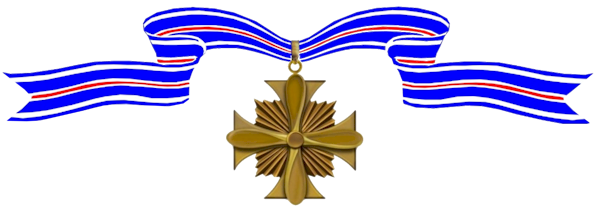The President of the United States of America takes pleasure in presenting the Distinguished Flying Cross to First Lieutenant Thomas G. Alderson (MCSN: 0-22972), United States Marine Corps, for extraordinary achievement while participating in aerial flights as a Pilot in a Marine Observation Squadron attached to a Marine Division during operations against the enemy on Okinawa Shima, Ryukyu Islands, from 17 April to 18 April 1945. Flying in extremely hazardous weather in the face of enemy anti-aircraft and small arms fire, First Lieutenant Alderson flew numerous missions in an unarmed and unarmored plane, observing enemy activities and installations. On several occasions when terrestrial observations were extremely restricted and our own troops were receiving heavy fire from well-concealed enemy positions, he voluntarily proceeded to perilously low altitudes, often below one hundred feet to locate and bring fire on the enemy, thus enabling our troops to advance. His courage, skill, complete disregard for his own personal safety and devotion to duty contributed materially to the successful conclusion of the operation and were in keeping with the highest traditions of the United States Naval Service.

Awards Received
-

Distinguished Flying Cross
-
Distinguished Flying Cross
Service:
United States Marine CorpsRank:
First LieutenantBatallion:
Marine Observation SquadronAction Date:
May 9 – 12, 1945
Commanding General, Fleet Marine Force Pacific: Serial 108731 (December 26, 1945)The President of the United States of America takes pleasure in presenting a Gold Star in lieu of a Second Award of the Distinguished Flying Cross to First Lieutenant Thomas G. Alderson (MCSN: 0-22972), United States Marine Corps, for extraordinary achievement while participating in aerial flights as a Pilot in a Marine Observation Squadron attached to a Marine Division during operations against the enemy on Okinawa Shima, Ryukyu Islands, from 9 May to 12 May 1945. Flying in extremely hazardous weather in the face of enemy anti-aircraft and small arms fire, First Lieutenant Alderson flew numerous missions in an unarmed and unarmored plane, observing enemy activities and installations. On several occasions when terrestrial observations were extremely restricted and our own troops were receiving heavy fire from well-concealed enemy positions, he voluntarily proceeded to perilously low altitudes, often below one hundred feet to locate and bring fire on the enemy, thus enabling our troops to advance. His courage, skill, complete disregard for his own personal safety and devotion to duty contributed materially to the successful conclusion of the operation and were in keeping with the highest traditions of the United States Naval Service.

